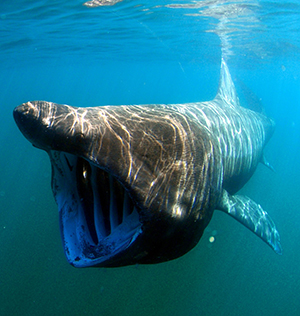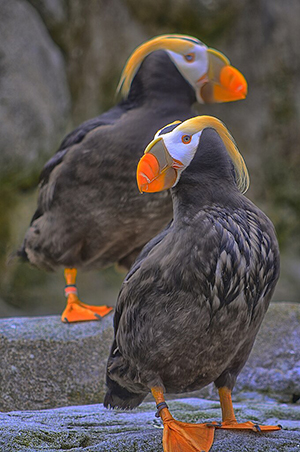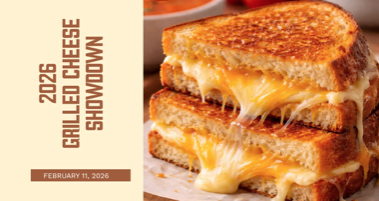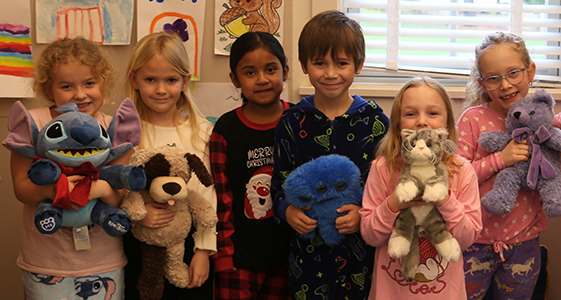||| FROM ELISABETH ROBSON |||
I frequently see people use the term “pristine” to describe the environment here in San Juan County. Perhaps for a visitor who stays but a few days this is understandable. Standing on the shoreline on a sunny summer day, it’s a beautiful view, as long as you don’t look too closely. Everything might seem fine.
But look a little deeper, and everything is definitely not fine. Stay longer than a day or two and it would be hard not to notice the plastic debris on the beaches. To see invasive lawn grass everywhere. To find dead frogs and snakes flattened on the roadways. To hear mind shattering noise from growlers. To see second growth trees instead of old growth forests. And to hear about the slow death spiral of 75 southern residents becoming 73.
Most recently, I saw someone describe the San Juans as being surrounded by “pristine” waters. How could anyone who lives here actually use that word to describe the Salish Sea?, I thought. That word sounds nice; and we all might wish the waters were indeed “pristine.” But wishing doesn’t make it so, and using the word encourages people to absolve their responsibility for learning the truth, and then doing something about it.
So what is the truth?
The truth is the Salish Sea is anything but pristine.
Massive container ships, oil tankers, and cruise ships make their way through the Salish Sea, just south and west of San Juan County, sending low frequency sounds and infrasound that interfere with whale communication, noise that can cause hearing damage and deafness over time. A deaf whale is a dead whale. Many other marine animals are also impacted by this underwater noise pollution. The Roberts Bank Terminal 2 project will double the capacity for large ships at the Port of Vancouver, and bring several hundred more ships per year through the Salish Sea, increasing the underwater racket.
These ships are also striking marine mammals, killing them. We are almost never aware of most of these strikes as the animals sink to the bottom of the Sea, and so we have no real idea of how many marine animals are killed every year by the ships that sail into and through the sea to Tacoma, Seattle, and Vancouver.
We live with the constant threat of a massive oil spill from these ships, and from the refineries and pipelines bordering the Sea. Recreational boats and fishing boats that also pose a noise and strike threat in the Salish Sea are perhaps the most common cause of small oil spills. One recent boat sinking off the coast of Henry Island (on May 3, 2024) spilled about 500 gallons of diesel. I read that number and remember that a dime sized drop of oil can be deadly to seabirds.
The Navy is a source of noise and other pollution in the Salish Sea. The EA-18G Growler electronic attack aircraft that frequent our skies deafen us with ear splitting noise that impacts humans and wildlife alike. The Navy also conducts weapons testing in the Salish sea, including sonar and detonations that can deafen and kill marine life. The many small planes that frequent the SJI, Orcas and Lopez airports especially during summer months are also extremely loud. Noise pollution causes stress, anxiety, depression, increased risk of heart disease, memory impairment, learning delays, and low birth weight in humans and likely other animals, too.
The Sea is full of toxic chemical pollution. This includes raw sewage, PCBs, dioxins, mercury, lead, flame retardants, PFAS, and plastic, along with a nauseating soup of antibiotics, hormones, opioids, chemotherapy drugs, detergents, soap, and lotion from wastewater and sewage outflows into the Sea. This pollution builds up in fish and marine mammals and can cause reproductive problems and death. If we eat from the Salish Sea, we are eating this pollution.
Local sources of plastic and other trash that ends up in the Sea are easily found in overflowing trash cans and roadside debris, along with trash left by visitors to the shoreline and on boats, and wastewater runoff. The Pacific Ocean has three large (and many smaller) garbage patches where plastic trash accumulates and can spread from there into coastlines around the ocean and the Salish Sea. Thousands of container ships spill containers into the world’s oceans on a regular basis, and most of the contents of those containers is never recovered. In October 2021, the MV Zim Kingston lost 109 containers off the coast of Vancouver Island and nearly all the debris remains at sea and is washing up regularly on Washington beaches three years later.
Plastic in the Sea breaks down into smaller and smaller pieces eventually becoming microplastic and nanoplastic. The main sources of microplastics other than from this breaking down process is clothes (from washing machines to wastewater systems to the Sea) and car tires and brake pads (from the roads to wastewater systems to the Sea). These tiny pieces of plastic too small to filter are killing plankton, being eaten by forage fish, and working their way up the food chain, eventually into our own human bodies. As plastic breaks down it releases toxic plasticizer chemicals and CO2. The tinier the pieces get, the more toxic chemicals and CO2 are released (because the total surface area grows larger as the pieces get smaller). A recent video by Dr. Richard Kirby, who photographs plankton from the ocean, shows plankton entangled in, attempting to eat, and choking on microplastics. It is heartbreaking to watch:
WATCH VIDEO: https://vimeo.com/899060411
Now, go look out at the view over the water, imagine the plankton in the Salish Sea choking on microplastics and see if the word “pristine” springs to mind.
Many species who once called the Salish Sea home have been made extinct or locally extirpated by habitat loss to development, pollution, noise, etc.


Hypoxia, or dead zones, is yet another threat to the Salish Sea: this is a condition where there is not enough oxygen in the water to support aquatic life. It can occur naturally but human-caused eutrophication is a major contributor to the increase in hypoxia in the Salish Sea.
Finally, I’ll mention shoreline armoring which can devastate habitat that would otherwise support salmon and forage fish like herring and sand lance, and erode beaches partially or entirely. One third of the Salish Sea shoreline is armored, including almost 27 miles of shoreline here in the county, according to a 2019 shoreline mapping by Friends of the San Juans.
The Salish Sea is not just far from pristine; it is, in fact, in the process of being killed. Death by a thousand cuts, we might say. We cannot fix problems if we pretend they don’t exist. Let’s at least be honest, so we can all work together to protect the Salish Sea.
**If you are reading theOrcasonian for free, thank your fellow islanders. If you would like to support theOrcasonian CLICK HERE to set your modestly-priced, voluntary subscription. Otherwise, no worries; we’re happy to share with you.**









“We cannot fix problems if we pretend they don’t exist.”
Well I guess it could be worse… and it’s gonna be. Therein lies the problem.
Whether it be over-growth, over-tourism, climate change, or ecological overshoot– looking the other way is the status quo approach to many of the dire problems of our times. They’re not inevitable, or created as a result of some unknown phenomena, natural occurrence, or by accident… they’re byproducts of the plan, (or lack of). Like the boiling frog analogy humans have a hard time recognizing, understanding, and therefore, adjusting to the problems that we’re creating.
Not unlike the third generation bird born in a cage that doesn’t know what freedom or what flight is, over time we become accustomed to the symptoms while we ignore the root causes. And in doing so, of course, only ensures that things will get worse, (and in some cases with the problems only becoming highly recognizable after it’s to late).
From Wikipedia– “The boiling frog story is generally offered as a metaphor cautioning people to be aware of even gradual change lest they suffer eventual undesirable consequences. It may be invoked in support of a slippery slope argument as a caution against creeping normality. It is also used in business to reinforce that change needs to be gradual to be accepted. The term “boiling frog syndrome” is a metaphor used to describe the failure to act against a problematic situation which will increase in severity until reaching catastrophic proportions. It thereby encapsulates the barely noticeable impact of slow environmental degradation that has been described by Daniel Pauly as shifting baselines.”
Heartbreaking news that the population is likely down to 72 with the probably death of the new baby. But perhaps not surprising given the many challenges the Orcas face.
https://www.seattletimes.com/seattle-news/climate-lab/baby-orca-in-l-pod-is-ailing/
Though it is heartbreaking, it is, as you suggest, not uncommon. How naive it is to succumb to the profit oriented status quo marketing tactics of the day and actually believe any news byline stating that the Salish Sea is pristine. As a society we’ve become so accustomed (so programmed) to the bad news that the good news is hardly more than a slightly better version of the bad news, (the lesser of evils).
For example, the good news now is when a single individual in a species has been born, or when a species has been taken off of the endangered species list and downgraded to the threatened species list. Or the good news is when a species has been taken off of the threatened species list, and is now merely on the Emergency species list, or when a species has recovered enough to be taken off of the Emergency species list and it once again falls under the profit oriented multi-use management programs (tourism, development, logging, hunting, trapping, etc.) of the U.S. Fish and Wildlife Service, BLM, DNR, or Forest Service, only to start climbing back up the ladder again after the numbers have been culled, or their habitat or food source sufficiently impacted.
“We cannot fix problems if we pretend they don’t exist.” We live in a matrix… our thought processes believing a narrative framed by news sources that manipulate the science and numbers, and in doing so distort our environmental and socio-economic reality. Again, we face a grim future when the good news is merely a slightly better version of the bad news. It is nothing more than a version of “Look over here, don’t look over there.”
SeaDoc Society
The State of the Salish Sea (Dr. Joe Gaydos)
https://www.seadocsociety.org/blog/the-state-of-the-salish-sea
“The Salish Sea Institute’s report features SeaDoc-led and funded science alongside contributions from other research organizations throughout the Salish Sea, and lays out the complexity of an ecosystem where decline has outpaced restoration and protection.”
Western Washington University – Salish Sea Institute
The State of the Salish Sea (Kathryn L. Sobocinski)
Full Report– https://cedar.wwu.edu/salish_pubs/1/
Executive Summary– https://cedar.wwu.edu/salish_pubs/2/
“Human impacts are multifaceted and extensive within the Salish Sea, with a regional population of almost 9 million people. Population growth has driven urbanization and development, which in turn has triggered structural changes to the landscape and seascape. Meanwhile, the growing effects of climate change are fundamentally altering physical and biological processes. The report describes the most pervasive and damaging impacts affecting the transboundary ecosystem, recognizing that some are generated locally while others are the locally realized impacts from global-scale changes in climate, oceans, land use, and biodiversity. The Salish Sea is under relentless pressure from an accelerating convergence of global and local environmental stressors and the cumulative impacts of 150 years of development and alteration of our watersheds and seascape.”
Thank you for helping us all look a little deeper, Elisabeth. If anyone wants to learn more about vessel traffic impacts on southern resident killer whales or the Salish Sea you can find more at https://sanjuans.org/program/safe-shipping/